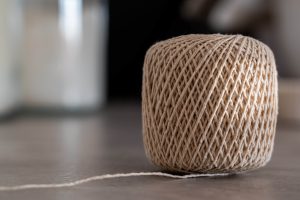Kitchen Twine substitute suggestions
Do you need a substitute for kitchen twine? Are you tired of wrestling with kitchen twine every time you want to tie up that roast, truss a turkey, or tie a bouquet garni? In this article, we’re going to introduce you to eight ingenious substitutes for kitchen twine that will blow your mind. Say goodbye to the frustrations of unraveling and struggling with traditional twine, and say hello to a world of creative alternatives. Whether you’re in a pinch and need an immediate solution or simply want to explore new options, these creative substitutes are worth giving a try.
Just remember to make sure whatever you choose is safe for cooking, and you’ll be good to go. Get ready to tie the knot like never before!
Try using: Dental Floss, Cotton Thread, Cheesecloth strips, Aluminium Foil, Cooking Bag, Toothpicks, Baking Paper, or Vegetable Leaves.
Okay, before we look at your kitchen twine substitute options in more detail, let’s deal with that empty cupboard situation!
Where can I buy Kitchen Twine?
If you want to be more prepared and ensure you don’t run out of kitchen twine, then you should stock up now.
Nowadays, general supermarkets stock a variety of kitchen twine. Or if you prefer you can also purchase kitchen twine on-line.
So why not jump on and place your order today.
STOCK UP NOW!
PerkHomy Cotton Butchers Twine
500 feet (150m approx) of 2mm butchers twine. Perfect for trussing meat and chicken. Made from food-grade material.
Strong, long, and doesn’t burn!
Multiple uses: Cooking, Crafting, Crocheting, and Knitting.
What can I substitute for Kitchen Twine?
Here are some of the best suggestions to substitute for kitchen twine.
- Dental Floss
- Cotton Thread
- Cheesecloth strips
- Aluminium Foil
- Cooking Bag
- Toothpicks
- Baking Paper
- Vegetable Leaves
Kitchen Twine substitutes
Dental Floss
Using dental floss as a substitute for kitchen twine is a very creative workaround. Dental floss is a thin, flexible strand typically made of nylon or Teflon that is used for cleaning between teeth. Its primary purpose is to remove dental plaque and food particles from areas between the teeth that a toothbrush might not reach effectively. You can find it in waxed or unwaxed varieties, as well as flavored or unflavored options. While its main use is for oral hygiene, as we just discussed, some creative cooks also repurpose it as a makeshift kitchen twine in a pinch.
It’s great for tying up roasts or securing stuffed poultry. Plus, it won’t burn in the oven, so it’s a handy alternative. If you are using it when trussing meat, then our tip would be to double up the floss to add a bit of extra strength.
Oh, and always make sure to use one that is unflavored and unwaxed. No-one wants a minty turkey joint!
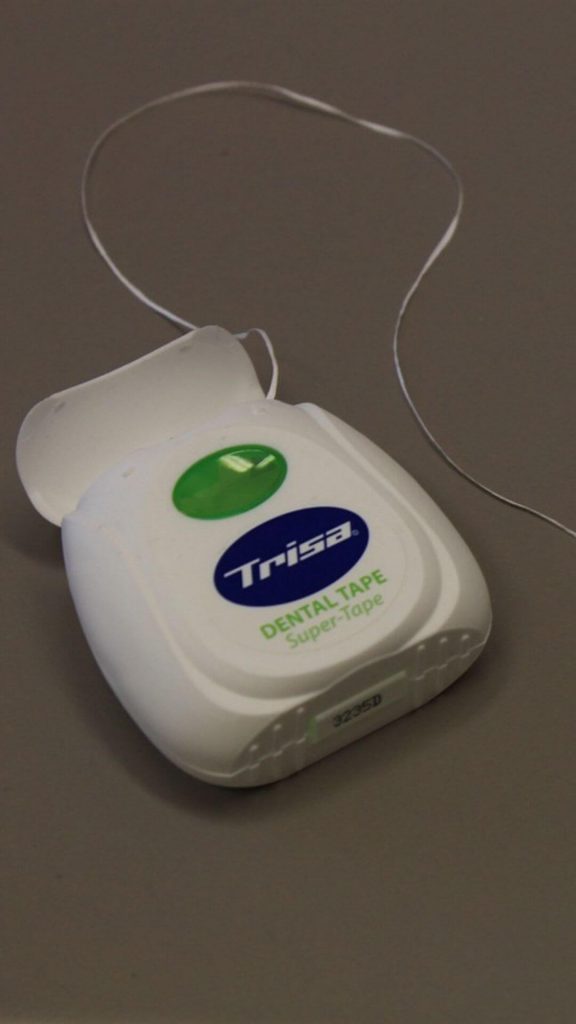
Cotton Thread
No kitchen twine? No problem! Most of us have a sewing box in the house and cotton thread can be a handy substitute. Make sure it’s a natural, unbleached thread without any added chemicals.
If you are using it to truss meat or tie up a roast, we suggest you double or triple the thread for extra strength. Secure the ends well, and tie your knots snugly but not too tight.
Whilst cotton thread is oven-safe, you should always keep an eye on it to avoid any burning.
This really is a simple and effective solution when you want a quick kitchen twine alternative.
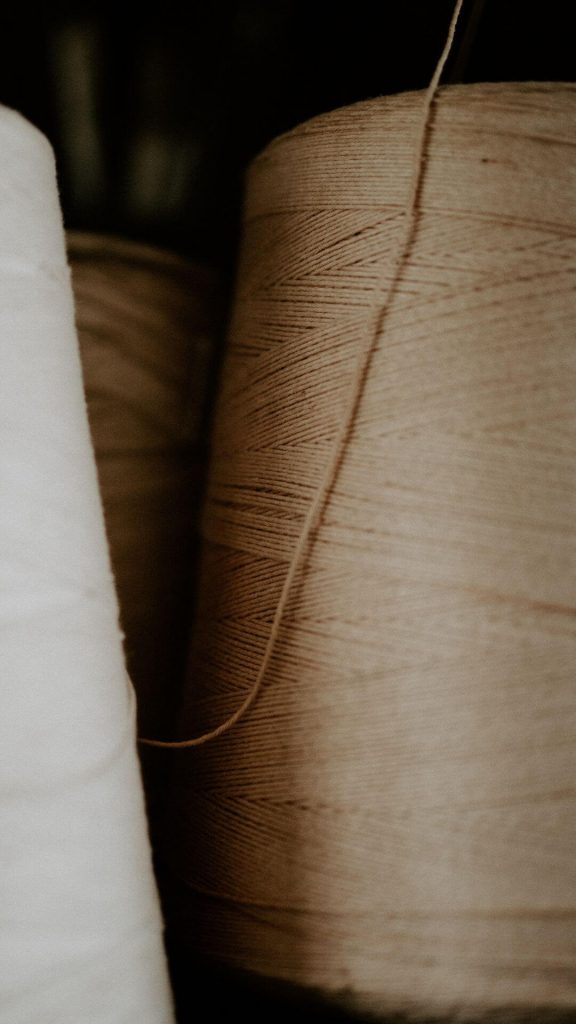
Cheesecloth strips
Cheesecloth (and muslin cloth) are both lightweight, woven fabrics, which can indeed serve as alternatives to kitchen twine in certain situations. While they’re not as strong, they work well for holding things together or creating bundles in cooking.
To use them as a substitute for kitchen twine, just follow these quick and easy steps:
- Cut Strips: Cut the cheesecloth or muslin into long strips. The width and length really depends on what you’re cooking and how much strength you need.
- Wrap and Tie: Wrap the cloth around your food or bundle and tie knots to secure it. Double or triple the cloth for added strength.
- Secure Knots Well: Make sure to tie the knots securely but not too tight, so you don’t squeeze your ingredients too much.
- Trim Excess: Trim any excess cloth, leaving enough for a clean presentation but removing unnecessary lengths.
This makeshift approach can be particularly useful for wrapping herbs, creating sachets, or securing stuffing in poultry. It might not have the same strength as traditional kitchen twine, but it can certainly get the job done.

Aluminium Foil
Aluminum foil (or tin foil) is a thin, pliable metal sheet commonly used for cooking, wrapping, and storing food. While it’s not a direct substitute for kitchen twine due to its lack of flexibility, it can be used in specific situations where tying or securing is required.
If you find yourself without kitchen twine, you can use aluminum foil creatively:
- Create a Foil Strip: Tear a strip of aluminum foil, ensuring it’s long enough to go around and secure your food item.
- Fold and Secure: Fold the foil strip into a thin, long ribbon-like shape. Use this to tie and secure your ingredients. It’s not as sturdy as twine, so you might need to be gentle when using it.
- Twist or Braid: If you need a bit more strength, consider twisting or braiding multiple foil strips together. This can provide a stronger makeshift tie.
- Secure Loose Ends: Once tied, make sure to secure any loose ends to prevent unraveling during cooking.
This foil method is best suited for lighter loads or securing items that won’t put too much stress on the foil. While it might not be as versatile as twine, it can be a handy solution.

Cooking Bag
A cooking bag (or roasting bag) is a heat-resistant, food-safe bag designed for cooking various dishes. Made from materials like nylon or polyester it will withstand oven temperatures. While it’s not a direct substitute for kitchen twine in the traditional sense, you can use a cooking bag creatively to secure your food without the need for twine.
Here’s a simple way to use a cooking bag as a substitute:
- Choose a Suitable Size Bag: Ensure your cooking bag is large enough to accommodate your dish.
- Place and Secure: Put your ingredients inside the cooking bag and tie a knot at the open end to secure them. You can use the excess part of the bag to tie a knot, creating a makeshift closure.
- Wrap and Tie Again: If you need additional support, you can wrap the bag around your food and tie knots at intervals to create a sort of “bagged” trussing effect.
- Follow Cooking Bag Instructions: Be sure to follow the instructions on the cooking bag packaging regarding temperature limits and other guidelines.
Using a cooking bag in this way is particularly useful for roasting or baking dishes, providing a contained environment for cooking. It won’t give you the same tightness as kitchen twine, but it’s a practical alternative when twine isn’t available.
Under no circumstances should you use a bag that is not suitable for oven roasting.
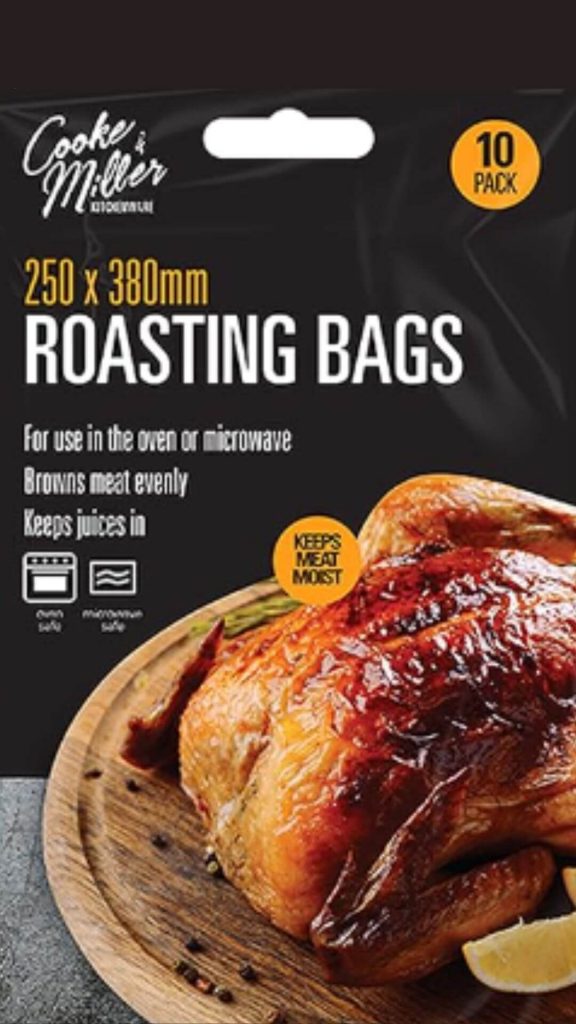
Toothpicks
Toothpicks are small, pointed objects typically made of wood or plastic, commonly used for holding food together or serving bite-sized appetizers. While toothpicks aren’t a direct substitute for kitchen twine due to their size and strength limitations, you can still use them creatively for certain kitchen tasks.
Here’s how you can use toothpicks as a makeshift substitute for kitchen twine:
- Skewering and Securing: Use toothpicks to skewer and secure small cuts of meat, folded-over poultry skin, or stuffed ingredients. Pierce through the layers and use the toothpick like a small pin to hold things together.
- Pin Rolls or Wraps: When dealing with rolled items like bacon-wrapped sausages or chicken, you can use toothpicks to secure the loose ends. Just remember to count and remove them before serving!
- Close Cavities: If you’re stuffing poultry or fish, you can use toothpicks to temporarily close cavities or openings. This will help prevent the stuffing from falling out during cooking.
- Labeling: If you’re dealing with multiple items that need identification, use toothpick flags with labels. It’s not for trussing, but it can help you keep track of different dishes.
Keep in mind that toothpicks may not be suitable for heavier loads, and they are not oven-safe if made of plastic. They are best for quick fixes and lighter applications. So, grab those toothpicks and get creative.
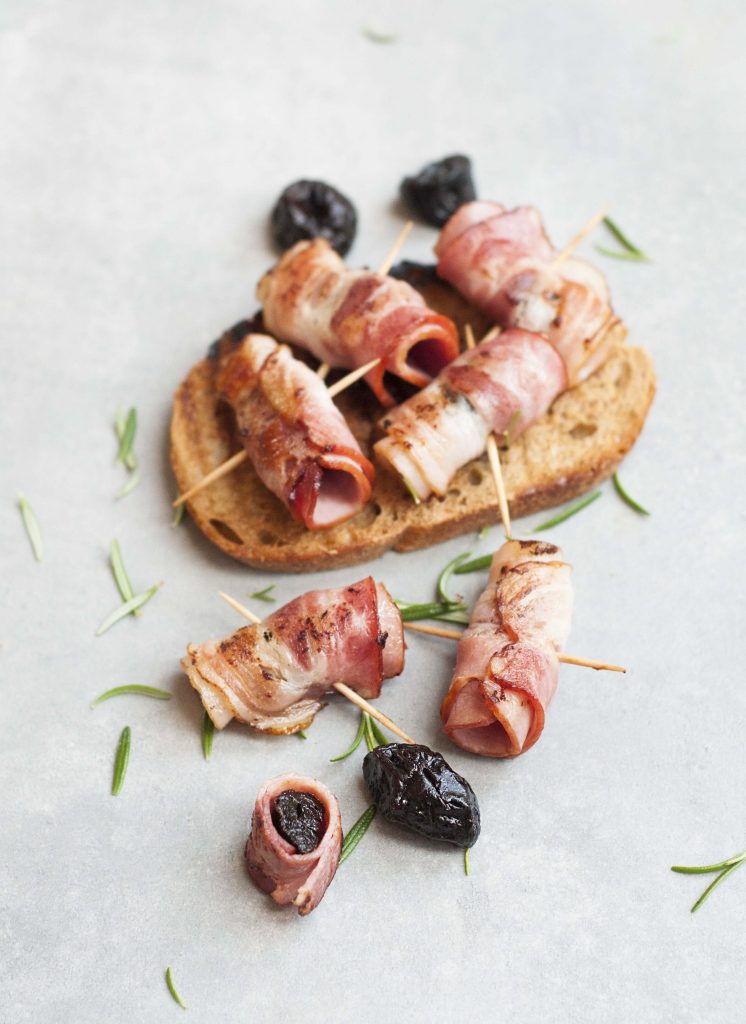
Baking Paper
Baking paper, also known as parchment paper, is a non-stick paper that’s commonly used in baking to prevent food from sticking to pans. While it’s not a direct substitute for kitchen twine due to its thin and flexible nature, you can use baking paper creatively in certain situations.
Here’s a way to use baking paper as a substitute for kitchen twine:
- Cut Strips of Baking Paper: Cut strips of baking paper, making them long enough to wrap around your food item.
- Wrap and Fold: Wrap the baking paper around your food, folding the ends together tightly. It won’t be as sturdy as twine, so you might need a few layers.
- Secure with a Knot or Fold: Tie a knot with the ends of the baking paper or fold them over to secure. If you’re making a knot, make sure it’s tight enough to hold the ingredients together.
- Trim Excess: Trim any excess baking paper, leaving enough for a neat presentation but removing unnecessary lengths.
This method is best suited for lighter loads or securing items that don’t require significant trussing. Keep in mind that baking paper is not heat-resistant enough for direct exposure to high temperatures, so it’s advisable to use this technique for dishes that don’t require extended cooking times or high oven temperatures. It’s a creative workaround when you find yourself without kitchen twine.
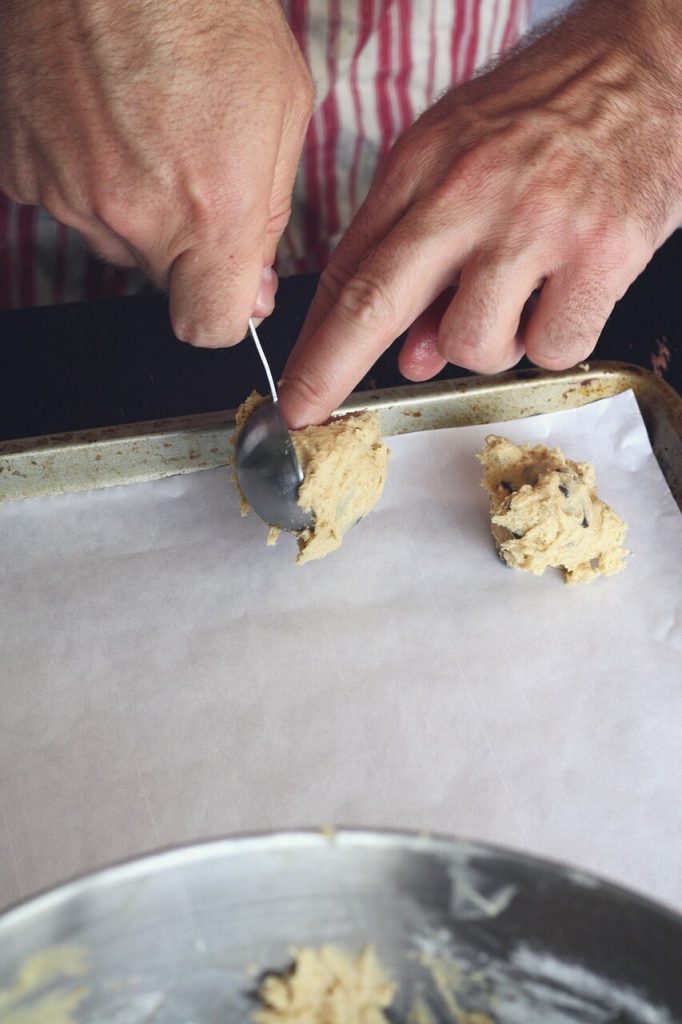
Vegetable Leaves
If you’re looking for a natural and edible substitute for kitchen twine, certain sturdy vegetable leaves can work well for tying or securing food. Here are a few options:
- Leeks or Green Onions: The long, flexible leaves of leeks or green onions can be used to tie or wrap around food. They add a mild onion flavor to your dish.
- Corn Husks: If you have corn husks, they can be soaked in water to make them pliable. Then you can use them to tie up tamales or wrap around food for a rustic touch.
- Cabbage Leaves: The large outer leaves of cabbage are robust and can be used to wrap and secure stuffed dishes or meats. They work particularly well for items that will be baked or roasted.
- Swiss Chard Leaves: The wide, sturdy leaves of Swiss chard are flexible and can be used to tie bundles or wrap around food for cooking.
- Banana Leaves: In some cuisines, banana leaves are used to wrap and secure food for cooking. The banana leaves add a unique flavor to the dish.
When using vegetable leaves as a substitute for kitchen twine, ensure they are clean and free from pesticides. You can use them in a manner similar to twine, wrapping and tying them to secure your ingredients. Keep in mind that the leaves may impart a subtle flavor to the food, so choose leaves that complement your dish. It’s a creative and natural way to tie up your ingredients, and you can experiment with different leaves based on what’s available and suitable for your recipe.
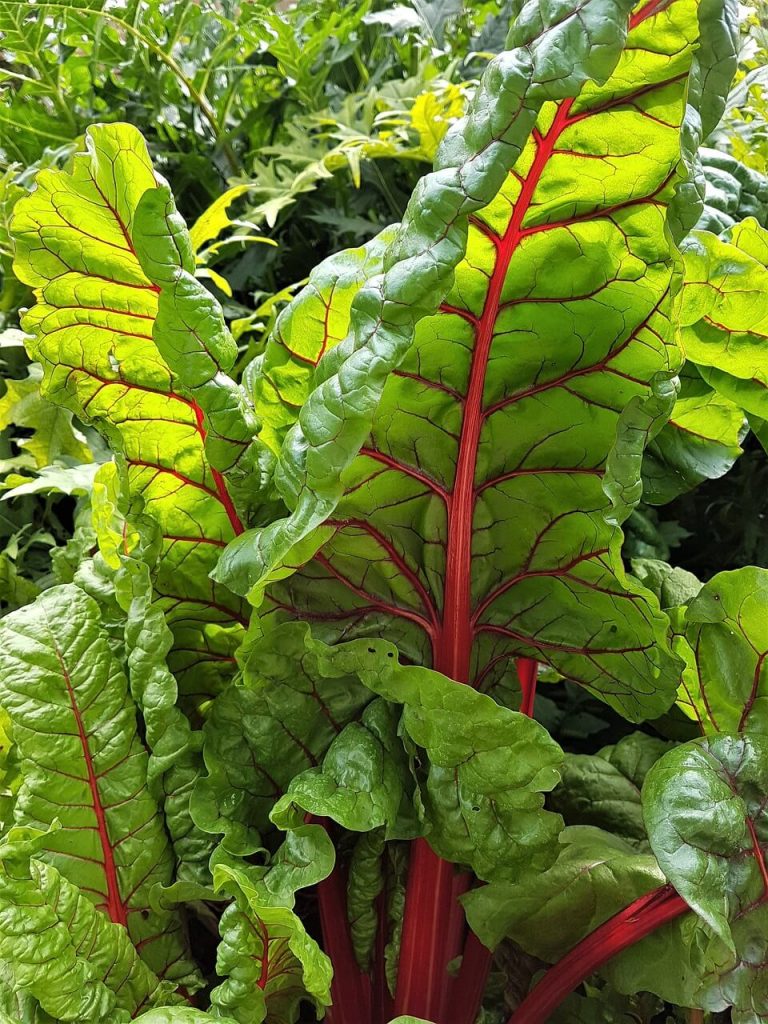
Summary for Kitchen Twine substitutes
Okay – that’s you all sorted with suitable substitutes for Kitchen Twine.
So, hopefully we have given you some inspiration for when you run out of kitchen twine. And hopefully you can get creative with the various substitutes. Here’s a quick summary:
- Dental Floss: Use unflavored and unwaxed dental floss to truss meat or tie up roasts. It’s oven-safe and a practical alternative in a pinch.
- Cotton Thread: Use natural, unbleached cotton thread to truss meat by doubling or tripling it for strength. Tie it securely but not too tight, and it’s suitable for various cooking tasks.
- Cheesecloth or Muslin Cloth: Cut into strips, and use these fabrics to tie and secure ingredients. They’re great for wrapping herbs or securing stuffing in poultry, offering a makeshift trussing solution.
- Aluminum Foil: Though not as flexible as twine, you can use foil by shaping it into strips for tying and securing food. It’s suitable for lighter loads and you can use it creatively in the oven.
- Cooking Bag: While not a traditional twine substitute, you can use a cooking bag to contain and secure dishes. Tie knots at the open end or wrap it around for makeshift trussing.
- Toothpicks: Useful for skewering and securing small cuts of meat, toothpicks can also be used to pin rolls or wraps together. They’re great for lighter applications and serving bite-sized portions.
- Baking Paper (Parchment Paper): Cut into strips, baking paper can be wrapped around food and folded or knotted to secure it. It’s best for lighter loads and dishes that don’t require high temperatures.
- Vegetable Leaves: You can use sturdy leaves like leeks, green onions, corn husks, cabbage leaves, Swiss chard leaves, or banana leaves to tie, wrap, or secure food. Ensure they’re clean and choose based on your dish’s flavor profile.
Experiment with these substitutes based on what’s available and suitable for your recipe.
We have gathered together a lot more facts on ingredients such as herbs, spices, oils, nuts, etc. if you would like to learn some more.
Or if you need to swap out another ingredient have a look at our Substitutes section.
